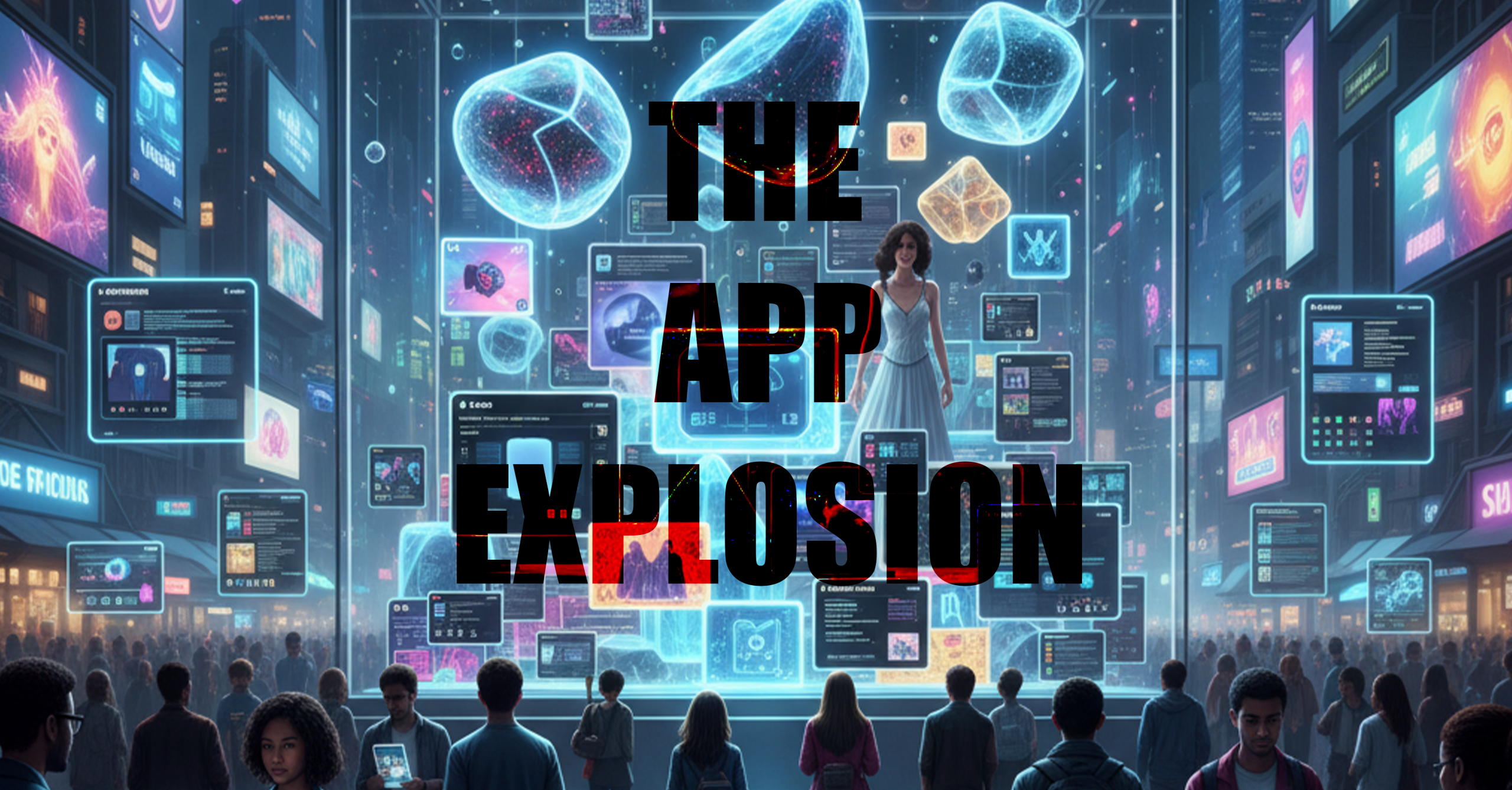No one truly knows where AI will take software or how much it will transform in the next 5 to 10 years.
What everyone knows for sure is that it will.
As the cost of building software approaches zero and the barrier to entry drops, millions more people will be able to create software.
The magnitude of this shift is almost impossible to imagine.
If more people build software, then more people will sell software and launch digital businesses.
In fact, it’s reasonable to believe that for most types of software – utilities, CRMs, marketplaces, even social apps – anyone will be able to build at least niche products and MVPs.
And it’s not unrealistic to expect that some of these projects will grow to meaningful scale.
If most of the population can build software, and even a fraction of them are creative and driven, the sheer volume of new software could explode by order of magnitudes.
This explosion means software will become more fragmented, customized, and tailored to niche needs.
Both companies and individuals — especially teenagers and digital natives — will start producing apps at scale.
The result will be an overwhelming flood of new apps.
—
I’m much more bullish on vibe coding tools for mobile apps than for web apps.
Most creators, creatives, and everyday users won’t be excited about building web apps, CRMs, or SaaS products.
It’s safe to assume that most creative people aren’t technical. Which means that a completely new wave of apps and possibilities is about to open up.
Simultaneously, as this happens, product features will matter less, while marketing and branding will matter far more.
Past creative extravanges; for the future core long tail of apps, differentiation won’t come from what the app does, but from how it’s presented.
The story behind it.
Think about CPG products: one person might argue that a “bio” or “milk-free” label makes a product unique, while another might say it’s just a marketing trick.
Either way, packaging and branding dominate. A similar shift happened when TV arrived and supermarket aisles filled with similar products—branding became everything. Look at Mars Inc., or newer brands like Liquid Death.
The same marketing dynamic is already happening in software, only now TV has been replaced by YouTube and TikTok.
—
Where are the last moat if you’re not building drones and rockets and complex payment systems?
My hint here is that individual creators will have big leverage. Software becomes more like info products in its essence.
Views convert to downloads and then to sales. Branding and storytelling dominate, even more than they do today.
Network effects strengthen, while niches get carved out left and right.
SM(Software)Bs become the norm.
More kids get rich than ever before: selling to other teenagers becomes one of the most valuable audiences for anything social or network-effect driven.
TikTok and YouTube creators switch from solely adsense and placements to app and software taking a larger part.
Think about it:
Why wouldn’t every big creator release their own line of utility software under their name?
Just like Kylie created a makeup and merch brand, why wouldn’t Taylor have a suite of 24 utility apps… TaylorCam, TaylorNotes, TaylorCal, step counters, workout trackers, meditation timers?
The opportunity is even bigger for mid-size and smaller content creators.
Once they’ll realize this…
Software becomes another way to monetize.
Content is king, and it will stay king.

Leave a Reply